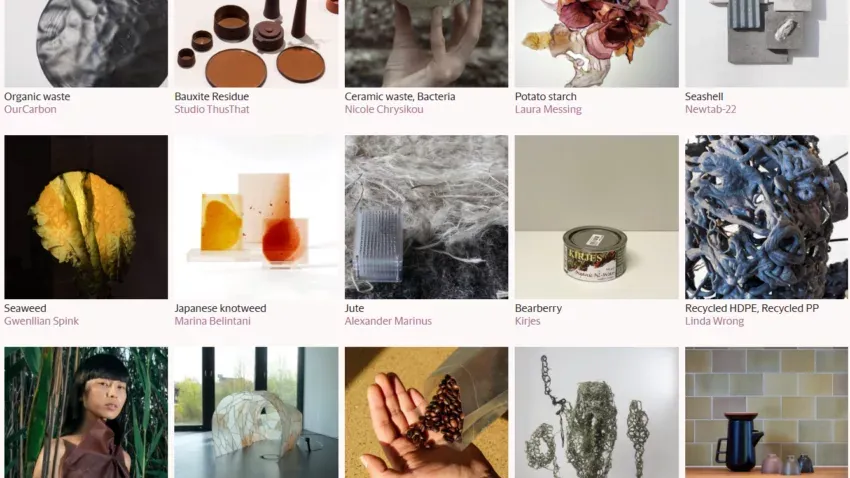An online and offline library, but for sustainable materials such as human hair, urine and concrete waste. That is the core of the Future Materials program, led by Italian Giulia Bellinetti, working at the Jan van Eyck Academy in Maastricht. It won her the Marc Cornelissen Brightlands Award: 35,000 euros and access to the valuable network of Brightlands and its partners.

For the success of a circular economy, it is important for the creative sector, business, architects and builders to find each other better. After all, a wealth of extraordinary and sustainable materials has already been invented that are eager to be used for all kinds of applications. In order to link the supply of these materials to the people who want to get started with them, the Future Materials Bank was established in 2020: a public database of hundreds of different materials, provided with description, ingredients and inventor. Do you want to use one of these materials? Then all you have to do is throw a line through the database to the person behind it.
Mindset Change
"With Future Materials we want to spread knowledge about sustainable materials developed by artists and designers," says Bellinetti. "These can be special materials made of hair, urine or algae, for example, but also well-known materials made of recycled wood, paper or concrete, for example. On the one hand, with the database we want to change the mindset of how people look at waste streams. Some materials look aesthetically fantastic, but have an origin from waste. On the other hand, we want to close the gap between artists, scientists, designers and architects. No matter where in the world they live, with Future Materials' database they can find each other and share knowledge about circular materials."
Concrete, wood, algae and grass
.Bellinetti focuses primarily on the creative industries, in her view an underexposed sector when it comes to the circular economy. "Artists among themselves can help each other in their search for more sustainable raw materials, for example by replacing acrylic paint with a natural variant." But the construction sector can also benefit from the database. "Future Materials first and foremost shows the possibilities for waste streams coming from construction, such as concrete and wood. In addition, the platform also provides inspiration for new building materials made from grasses and algae, for example."
Library full of materials
.In the meantime, the digital database contains more than four hundred different materials. Of these, some 160 materials are actually stored in the Future Materials Lab in Maastricht. "For materials conceived by artists in New Zealand or materials made from specific native plant species, it makes less sense in terms of sustainability to bring them here," Bellinetti says. "But we are still expanding the library. Soon we will move to a new, larger location within the Jan van Eyck Academy."

Network Brightlands
With her idea, Bellinetti won the Marc Cornelissen Brightlands Award earlier this month, an innovation prize worth 35,000 euros awarded each year to sustainability pioneers. Bellinetti plans to invest the prize money in further developing the database and expanding her business plan. But even more important to her are the doors the award opens to the Brightlands network itself. "The Brightlands and Chemelot network is very valuable. After winning the award, we are constantly put in contact with big companies, start-ups and other creators who want to get started with sustainable materials."
Healthy business model
.The Future Materials program has now been corporatized into an autonomous foundation. That way, the materials bank remains freely accessible to creative creators. Eventually, the foundation should have a healthy mix of income ranging from grants, sponsors and clients. "We are thinking of different flavors of membership, for example, a model for designers and start-ups, rising to licenses for large companies and investors. For example, the foundation can develop paid consulting assignments and workshops and link individual creators to innovative companies. In any case, to survive, a healthy and diverse revenue model is essential."
Source: change.inc